|
Students are housed in dorm rooms on campus with four to twelve students per room. Teachers and chaperones stay in their own rooms close by. Meals at CIMI are family style in the dining hall. Students rotate responsibilities for setting tables and cleaning up after each meal. Camp counselors are young, energetic, and very knowledgeable about the flora and fauna on Catalina Island. They are expert snorkelers and kayakers and work with many school groups that visit the facility. Every year students rave about their week at CIMI. It is a highlight of the 6th grade outdoor education program. |
|
Geologists have learned about the layers of our planet by sending and receiving seismic waves through the ground. Some of these seismic waves can pass through liquids and others cannot. Using these wave pickup patterns, scienctists have learned that the center of our planet is solid and the outer core is liquid. |
|
In this unit students learn about divergent and convergent plate boundaries and the stick-slip motion of plate movement. A significant amount of energy is released during an earthquake, causing seismic vibrations in the form of S-waves and P-waves to propogate through the ground. Some of these seismic waves reach the surface and travel horizontally away from the earthquake epicenter, causing much damage to rigid structures such as roads and buildings. |
|
Determining density requires that an object's mass is measured in grams and also its volume. For a regularly shaped object, length x width x height will yield volume, but for an irregularly shaped object we have to use the water displacement method of determing volume. Once we have the mass and the volume of an object, we can divide mass by volume to determine density. Students participate in a number of labs to hone their skills both with calculations and with lab equipment. A final challenge is to determine the relative densities of boys versus girls. Students are always surprised by the results! |
|
Giant kelp plants are actually a type of algae that attaches to the bottom substrate with fronds extending up to the surface to collect sunlight. Many types of invertebrates and fish call the kelp forest home and inhabit different levels of the kelp frond -- from the holdfast on the rocky ocean floor up to the canopy floating on the surface. Unfortunately, kelp forests are endangered both from storm and wave action as well as from a proliferation of sea urchins, which tend to eat the holdfasts at the base of the kelp. Sea otters love to eat sea urchins, but sea otters are also not doing too well. Scientists are uncertain why the California sea otter has failed to flourish, even when it is in protected waters. |
|
Alfred Wegener, a German climatologist, first came up with the theory of "continental drift." Using coal formations, similar mountain ranges, and the fossil record, he theorized that all of the present continents were at one time in the early history of our planet (some 250 million years ago) part of a huge landmass that he called "Pangaea." His theory was not widely accepted until some years later we discovered sea floor-spreading and geologists realized that tectonic plates were responsible for the movement of continents and oceans. The theory of plate tectonics did not gain wide acceptance among scientists until the 1960's. |
|
Volcanoes can be active, dormant, or extinct. Half Dome in Yosemite National Park is actually the extinct remains of a volcanic magma chamber. Devil's Tower in Wyoming and Ship Rock in New Mexico are examples of extinct volcanoes. Sixth grade students at Chadwick are fond of skiing at Mammoth Lakes. In one of our labs we learn that Mammoth Lakes is actually the location of the Long Valley Caldera, a "sleeping" super volcano! Volcanoes are found all around the world, but in particular, along subduction zones where one tectonic plate is sliding underneath another plate. Some volcanoes erupt relatively quietly, like Mauna Loa in Hawaii. Others, like Mount St. Helens, erupt explosively. |
|
Sea level rise, the acidification of our oceans, more powerful storms, greater rainfall in some areas and drought in others, an increase in water vapor in the atmosphere, changes in species behavior such as the pine bark beetle, beach erosion due to storm surge, an increase in carbon dioxide levels to over 400 parts per million, the atmospheric gas mixtures from Antarctic ice cores, the melting and receeding of glaciers around the world, the loss of ice mass in Greenland, the influential factor of methane hydrate exposure in arctic land masses and its effect on global greenhouse gases -- all of these factors and more are introduced to students so that they will understand the vast amount of evidence that scientists have accummulated in documenting climate change. Since this is a fairly new topic, no text book readings are available. We do, however, have many videos that outline the problem and illustrate the science behind climate change. In addition we lean heavily on data collected by NASA's many earth-orbiting satellites. |
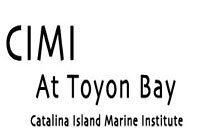 In early September each year sixth grade students at Chadwick spend a week at Catalina Island's Toyon Bay CIMI facility. Activities include kayaking, rock climbing, star gazing, back country hikes, marine biology labs, and, of course, lots of snorkeling.
In early September each year sixth grade students at Chadwick spend a week at Catalina Island's Toyon Bay CIMI facility. Activities include kayaking, rock climbing, star gazing, back country hikes, marine biology labs, and, of course, lots of snorkeling.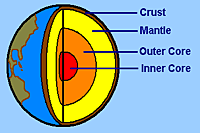 The first earth science unit introduces students to basic layers inside our planet, from the crust on the outer shell of the planet all the way to the solid and very hot inner core of iron. Students learn that temperature increases as you go down towards the center of the planet. They also learn that these temperatures are far above what humans can withstand, therefore it is not possible to "travel" to the center of the earth.
The first earth science unit introduces students to basic layers inside our planet, from the crust on the outer shell of the planet all the way to the solid and very hot inner core of iron. Students learn that temperature increases as you go down towards the center of the planet. They also learn that these temperatures are far above what humans can withstand, therefore it is not possible to "travel" to the center of the earth.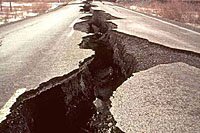 California is well-known for its many earthquakes. The Los Angeles area has the San Andreas Fault zone with earthquakes in the 1+ to 3+ range on the Richter scale happening frequently.
California is well-known for its many earthquakes. The Los Angeles area has the San Andreas Fault zone with earthquakes in the 1+ to 3+ range on the Richter scale happening frequently.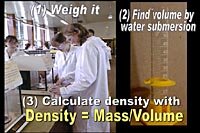 The unit on Density and Buoyancy attempts to answer the question, "Why do some objects sink while others float?" Students learn the difference between 'mass' and 'weight.' They learn about gravity and 'newtons.'
The unit on Density and Buoyancy attempts to answer the question, "Why do some objects sink while others float?" Students learn the difference between 'mass' and 'weight.' They learn about gravity and 'newtons.'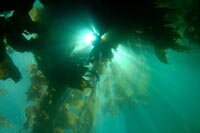 After students return from the early September week-long trip to Catalina Island (CIMI) we launch into a unit on Kelp Forests. Students learn about the giant kelp, Macrocystis Pyriferia, and its unusual Pacific coast habitat.
After students return from the early September week-long trip to Catalina Island (CIMI) we launch into a unit on Kelp Forests. Students learn about the giant kelp, Macrocystis Pyriferia, and its unusual Pacific coast habitat.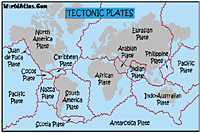 Plate tectonics deals with the concepts that our continents and oceans ride on top of huge "plates" that move about the surface of our planet over time.
Plate tectonics deals with the concepts that our continents and oceans ride on top of huge "plates" that move about the surface of our planet over time. Volcanoes have a definite structure, from the magma chamber deep underground to the surface vent where lava is ejected. Some volcanoes have unusual features such resurgent domes and cinder cones inside their calderas.
Volcanoes have a definite structure, from the magma chamber deep underground to the surface vent where lava is ejected. Some volcanoes have unusual features such resurgent domes and cinder cones inside their calderas.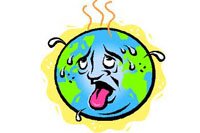 Climate change is happening at an increasing rate on our planet. This unit introduces students to the evidence and the effect that climate change is having on ecosystems around the planet.
Climate change is happening at an increasing rate on our planet. This unit introduces students to the evidence and the effect that climate change is having on ecosystems around the planet.  Click on the image or the link below to send an email to MrC at
Click on the image or the link below to send an email to MrC at